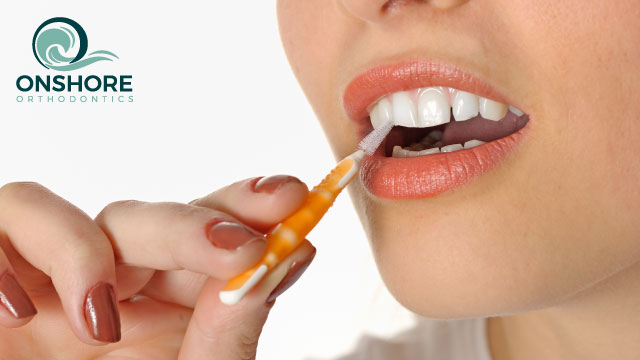Interdental Brushes, An Excellent Choice For Orthodontic Hygiene

Oral hygiene during braces is critical because food debris quickly accumulates in the oral cavity and later causes problems such as tooth decay or periodontal disease (gum disease). And you might hear it, but here it goes again, “good hygiene is essential during orthodontic treatment” to get a healthy smile.
Not optimal hygiene habits could delay orthodontic treatment or, in the worst case, end it. In this article, we deal with an important fact, or we might say, a necessary utensil, “the interdental brush,” in oral health.
Just before we begin, here is a friendly reminder. Practicing good oral hygiene habits is essential to keep our teeth and gums clean, especially during orthodontic treatment. So, with no further introduction, let’s begin.
What Is an Interdental Brush?
The mighty interdental cleaning device is a utensil with a small shaft in one of the extremes patients press with their index and thumb fingers to maneuver it. The interdental cleaner utensil has bristles around the tip that look like a toilet brush.
The magic behind the interdental cleaner brush is that the little bristles go through the interdental space, the space between the wires and teeth and between brackets and wires, sweeping the debris.
Interdental brushes are a tool that ensures excellent care of your teeth; this useful utensil is one of the few gadgets patients can use as non-dental health professionals that could help attain a deep reach to remove food particles.
Also, an interdental brush is effective at cleaning gaps between teeth, maximizes debris elimination, and reduces plaque build-up that deposits on our teeth. We highly recommend keeping orthodontic appliances in ideal condition without damaging them, and these tiny brushes do the job.
How To Use an Interdental Brush?
Interdental brushes are a much more comfortable and effective alternative to traditional floss or string floss. Although it is much easier to use the interdental brush, it is necessary to know a straightforward technique.
We want to share tips on adequately using an interdental brush most effectively and practically to keep your gums healthy and in perfect condition.
There are several interdental brush sizes. Therefore, the first step for proper interdental brushing is to choose the correct size of the interdental brush to make the process easier. So, after selecting a brush, it is essential to hold the brush with the thumb and the index.
It is not a complex technique; actually, it is not even a technique at all. It is just a matter of pressing it with both fingers, and that’s it. After you handle and notice how to maneuver the interdental shaft, we assure you that you will be able to use the interdental brush easily and comfortably.
Once you have a good grip on the brush and technique, you must gently brush between the teeth with a slight movement back and forth approximately two or three times.
We recommend cleaning between the molars, and it can be helpful to brush both from the inside and the outside using the interdental brush at least once a day after your regular brushing.
Will I Still Have to Floss?
Yes, you still have to practice regular floss. We recommend using a self-threading flosser to make the job more accessible and handy for you. Dental floss is an excellent complement to tooth brushing.
We also recommend flossing daily after each meal to eliminate bacteria that can hide in your teeth in tight spaces, which you could not reach with regular brushing alone. You could use the self-threading flosser in the order you prefer, before or after using the interdental brush.
How Plaque and Cavities Harm Your Treatment
When dental plaque accumulates and solidifies, it forms tartar around the gums. This limits the ability of the teeth to move so that orthodontic treatment would not achieve its primary objective. For this reason, the treatment would take longer.
Cavities are a common oral disease. They are a stone on the road for orthodontic braces treatment. Once cavities appear, they are challenging to attack with regular hygiene mechanisms in your daily routine.
In those circumstances, patients must prioritize dental hygiene and do their best to remove accumulated food and debris, as cavities might get more profound and more prominent.
Along with extensive oral hygiene, once you have a cavity, it is inevitable to visit a dentist to start a cavity treatment immediately. You might not need to get your braces removed during a cavity procedure.
However, there might be cases when the orthodontist might need to remove a bracket and sometimes a wire before the dentist starts working on the tooth.
Orthodontics That Make Dreams Possible
At OnShore Orthodontics, we give our patients the best advice, strive to create a comprehensive plan, and help our patients get the smile they’ve dreamt of. So make a call or schedule an appointment; our kind staff will gladly help you with all your concerns.


